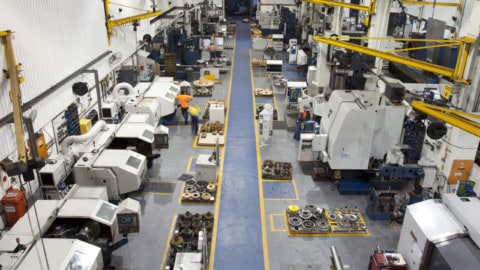The Australian food & beverage industry is a mature sector with established processors, iconic brands, a strong export-orientation and an increased focus on healthier and more convenient foods.
The food & beverage sector is the largest manufacturing sector in Australia in terms of sales revenue and employed around 1.68 million persons in 2010–11; 15 percent of total employment in Australia (2 percent higher than in 2009–10). The largest segments within this sector are meat and dairy.
Australian food exports totaled $27.1 billion in 2010–11. Food imports totaled $10.6 billion. Japan and the United States remain the biggest markets for the Australian food industry, but other destinations have grown in importance over recent years and are providing key opportunities for exporters.
Sector challenges
The key challenges faced by the sector include:
• Price pressure from the large retailers
• The strong Australian dollar’s impact on export-exposed segments
• Rising input costs (especially raw material and energy costs)
• Increased complexity of food safety compliance requirements
• Drive towards sustainable operations
• Increased demand for transparency and visibility (for internal and external stakeholders)
• Challenge of remaining cost competitive when compared with low-cost manufacturing locations globally
• Challenge of effectively addressing health and wellness and convenience trends
• Challenge of maximizing export opportunities to transition economies (China, India, ASEAN, Middle East and Africa)
Opportunities for the pump industry
The addressable opportunity for pump suppliers to the food & beverage manufacturing sector is typically across both sanitary and non-sanitary applications.
Sanitary pumps account for more than half the total pump market revenues in the food & beverage industry; with positive displacement pumps accounting for a higher proportion of sanitary pumps than centrifugal pumps.
Within the sanitary positive displacement pump segment, rotary lobe pumps accounted for the largest portion of revenues.
The dairy sector accounts for the largest sub-segment of pump revenues in the food & beverage industry. This is followed by beer & spirits, confectionery, soft drinks, ready meals, fruit & vegetable processing, meat processing and pet food.
In Australia, the demand for processed food is significant; driven largely by increased consumerism and changing lifestyles. Time-poor consumers are changing consumption patterns in favour of pizzas, soups and ready-made food products. Increased demand for infant food and pet food is also spurring growth in the processed food industry. This is expected to result in increased demand for positive displacement pumps, such as gear and lobe pumps, that are used in the production of processed food.
With electricity prices rising substantially, food manufacturers are likely to focus on optimising energy use and reducing energy consumption. Consequently, the demand for pump sets with motors that adhere to the latest energy efficiency standards is poised to increase. However, in the present economic situation, the high cost of energy-efficient pumps may deter some food manufacturers from opting for them.
With the large installed base of pumps across food & beverage processing facilities, upgrade and replacement opportunities – to address wear and tear – are significant drivers of pump revenue growth.
In the current weak economic environment, many food manufacturers have shifted their focus towards refurbishment of existing facilities and deferred new projects. This has led to an increased focus on the maintenance of existing pumps, rather than the purchase of new pumps; thus sustaining pump maintenance revenues.
While the trend toward moving operations to lower cost locations has negatively impacted plant and machinery capex, the drive to reduce wage costs as a proportion of total operating costs is seeing increased automation in Australian processing facilities. This is likely to have a positive impact on pump demand.
Mergers and acquisitions across many sub-sectors of the Australian food & beverage industry have resulted in the rationalization of operations. While this usually means closure of smaller plants, it could also result in the addition of capacity and upgrades at larger more strategically important processing plants
As part of the drive toward more sustainable operations, processors are increasingly looking at re-circulating water to reduce total water consumption onsite. This drives pump purchase for new process loops and reuse/recycling flows.
As energy management and productivity improvement plans increasingly take a more holistic view of total operations (as opposed to bolt-on or localised quick fix solutions), suppliers with a comprehensive suite of products and services stand to gain the most. Turnkey system suppliers who not only supply pumps, but also other process equipment (e.g. valves, heat exchangers, homogenizers, evaporators, pasteurizer, water dearation, clean-in-place (CIP), carbonation, UHT processing, inline separation, aseptic tanks, membrane filtration, piping etc.), as well as relevant services, are best placed to take advantage of this trend. ■
This article was authored by Ivan Fernandez, Industry Director, Industrial Practice, Australia & New Zealand, Frost & Sullivan. For media queries or more information please contact [email protected]


















